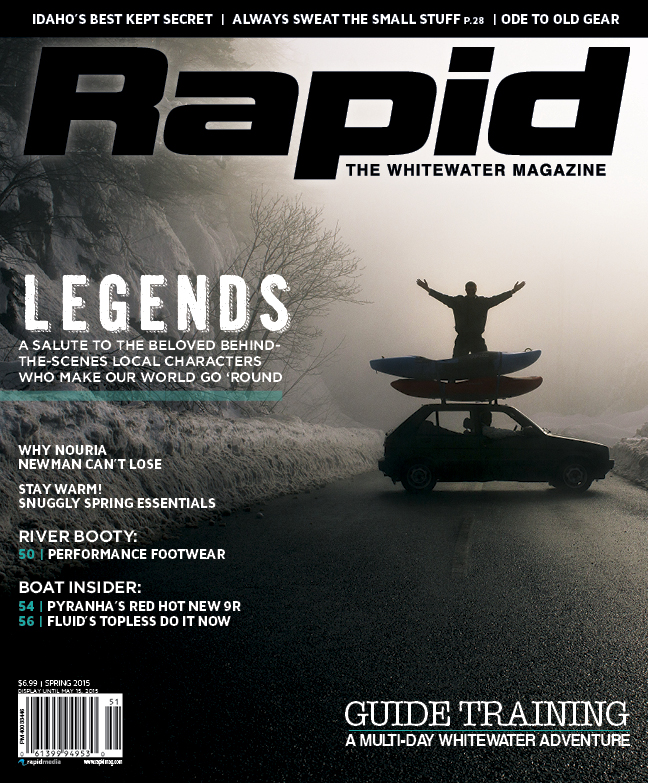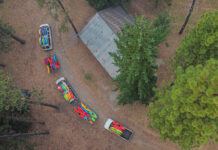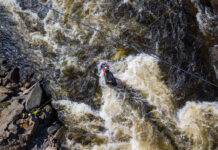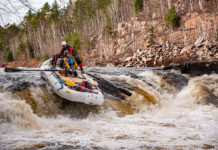I got a good scare last fall on a late October multi-day trip when a loaded oar rig flipped and not everyone came out from underneath it.
Flipping a loaded oar rig is always bad news—something to be avoided at all cost. Once upside down, they become giant, heavy, out-of-control entrapment devices. So it was with this one.
I spent several years river guiding in the desert southwest, and days off were all about rock climbing. Big walls were my thing then—long, technical, gear-intensive and sometimes multi-day tests on a massive cliff face. I wasn’t athletic enough to climb the good sport routes, and there was something more appealing about the slow, methodical pace of aid climbing. A single pitch can take hours—hours of intense concentration and focus on the minute details. Aid climbing requires every movement to be planned, precise and methodical. Big wall climbing narrows the universe down to just gravity, arm’s-reach imperfections in the rock face, your belay partner and whatever goes on in your head. The saying ‘don’t sweat the small stuff’ doesn’t apply to big wall climbing. Nor to running stiff whitewater in oar rigs.
Social psychologists tell us certain people are better at details than others—it’s accounted for in our personality traits, which science has narrowed down to the Five Factor Model of Personality. As the anchor of the ‘big five’ traits, conscientiousness measures one’s tendency towards detail, organization and diligence. (The other factors are agreeableness, neuroticism, openness and extraversion). There are reams of research on this, and it all points towards conscientiousness as a reliable predictor of almost any form of human performance—more predictive than any other of the big five traits. The more that details matter to an activity, the more predictive conscientiousness is. I often pull out this quote when teaching my outdoor students: “Show me a person who cannot bother to do little things, and I’ll show you a person who cannot be trusted to do big things.”
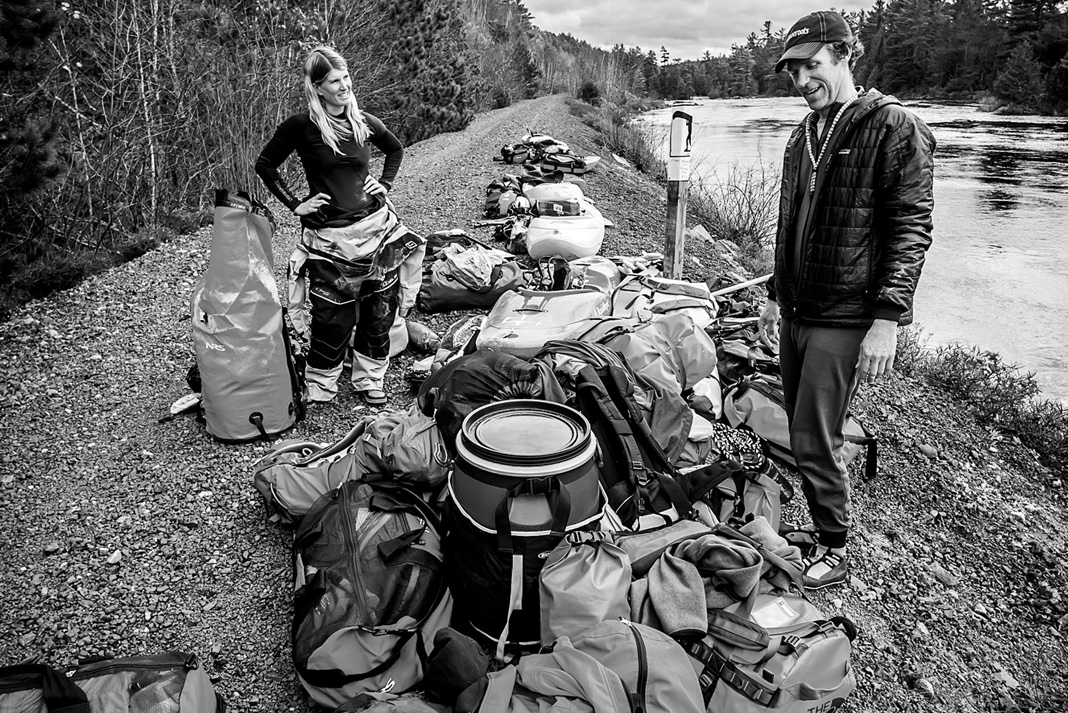
Aspects of conscientiousness are learned skills—one can improve their ability to take care of details. Here I hope I am stating the obvious: safety critical activities like rock climbing and running oar rigs are detail intensive.
This brings us back to the upside down entrapment device, the one out from under which too few helmets emerged.
Standing on the river left shore, I watched the 15-foot oar rig line up for the steep, shallow rapid. We’d taken our time setting up the run, taking care of all the potential details, and settled on the most conservative plan given our options.
The first raft patiently drifted through the shallow entry and locked into the crux slot just a raft-width wide. That the second raft scrubbed a rock on entry and turned a little sideways was not unexpected—nor when it did one of those slow slide-up-the-edge of-the-slot-and-tip-over moves—but when one helmet did not emerge it was rescue 911 mode.
“Show me a person who cannot bother to do little things, and I’ll show you a person who cannot be trusted to do big things.”
Two guides were in the water with their hands on the boat in a flash, slowing it down and getting it out of the current. I bashed my way through the bush to get downstream of it where we corralled the raft to shore—30 seconds passed. Just as we got control of it, the trapped guide-in-training emerged, knife in hand, having successfully cut himself free.
Too close for comfort.
The bow line, which in this case was a clipped throwbag, had trailed out after the flip even though the bag itself stayed in place. The rope found its way around the passenger’s ankle.
A tightly coiled bowline or slip knotted throwbag are just one of a hundred details it takes to put together an efficient oar rig. Getting behind the oars and adding moving water introduces hundreds more. Add some clients and multiply the details by a thousand.
How does one decide which details matter and which ones are less important? The answer is simple: they all matter. In this whitewater gig, whether rigging a half ton oar rig or just wedging your feet into a playboat, every little detail matters. Our safety critical environment means that the detail overlooked or left undone may be the one that makes all the difference.
Jeff Jackson is a professor with Algonquin College’s Outdoor Adventure guide training diploma and is the co-author of Managing Risk: Systems Planning for Outdoor Adventure Programs.
This article first appeared in the Spring 2015 issue of Rapid magazine.
Subscribe to Paddling Magazine and get 25 years of digital magazine archives including our legacy titles: Rapid, Adventure Kayak and Canoeroots.



